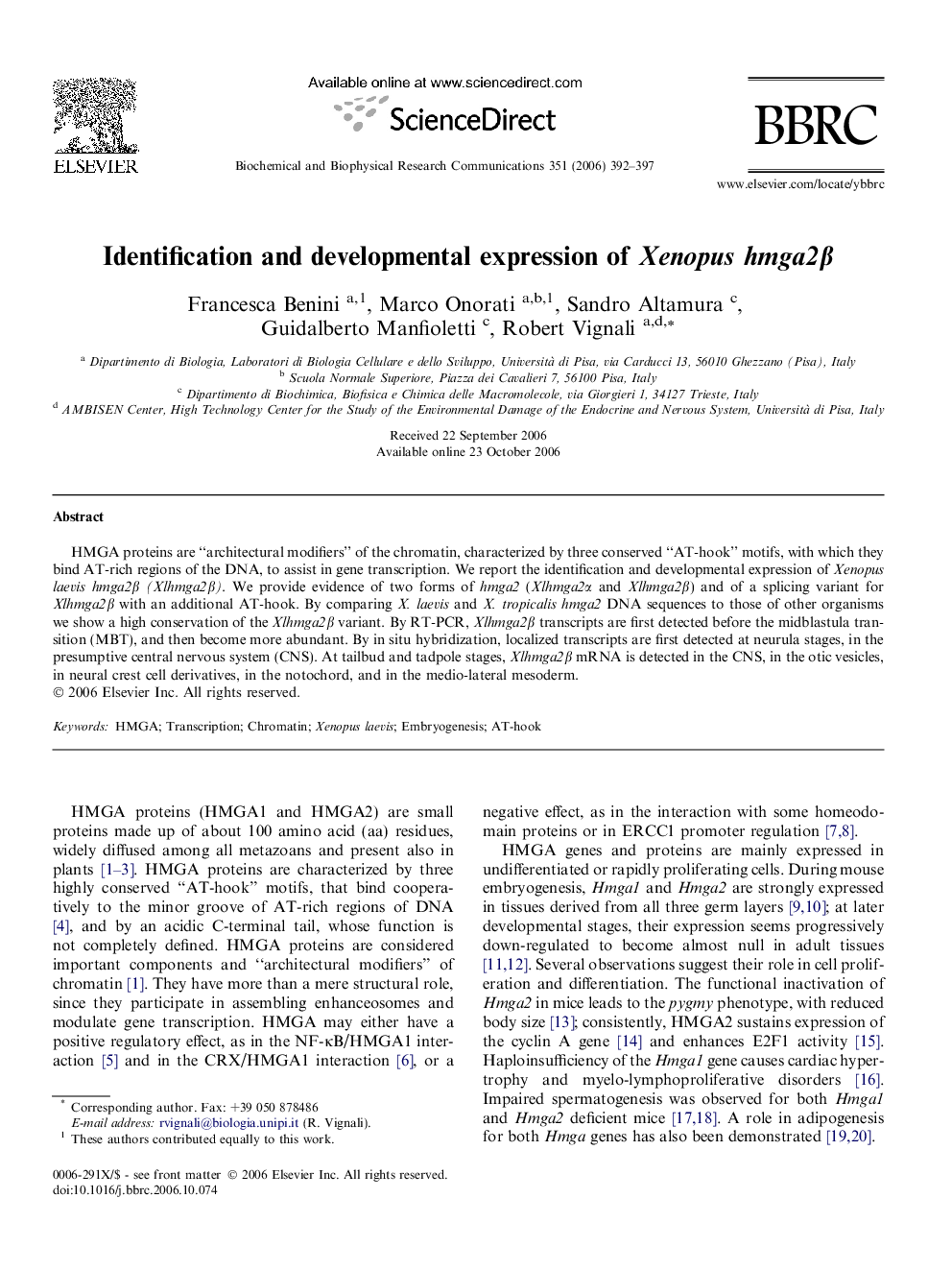| Article ID | Journal | Published Year | Pages | File Type |
|---|---|---|---|---|
| 1938149 | Biochemical and Biophysical Research Communications | 2006 | 6 Pages |
HMGA proteins are “architectural modifiers” of the chromatin, characterized by three conserved “AT-hook” motifs, with which they bind AT-rich regions of the DNA, to assist in gene transcription. We report the identification and developmental expression of Xenopus laevis hmga2β (Xlhmga2β). We provide evidence of two forms of hmga2 (Xlhmga2α and Xlhmga2β) and of a splicing variant for Xlhmga2β with an additional AT-hook. By comparing X. laevis and X. tropicalis hmga2 DNA sequences to those of other organisms we show a high conservation of the Xlhmga2β variant. By RT-PCR, Xlhmga2β transcripts are first detected before the midblastula transition (MBT), and then become more abundant. By in situ hybridization, localized transcripts are first detected at neurula stages, in the presumptive central nervous system (CNS). At tailbud and tadpole stages, Xlhmga2β mRNA is detected in the CNS, in the otic vesicles, in neural crest cell derivatives, in the notochord, and in the medio-lateral mesoderm.
